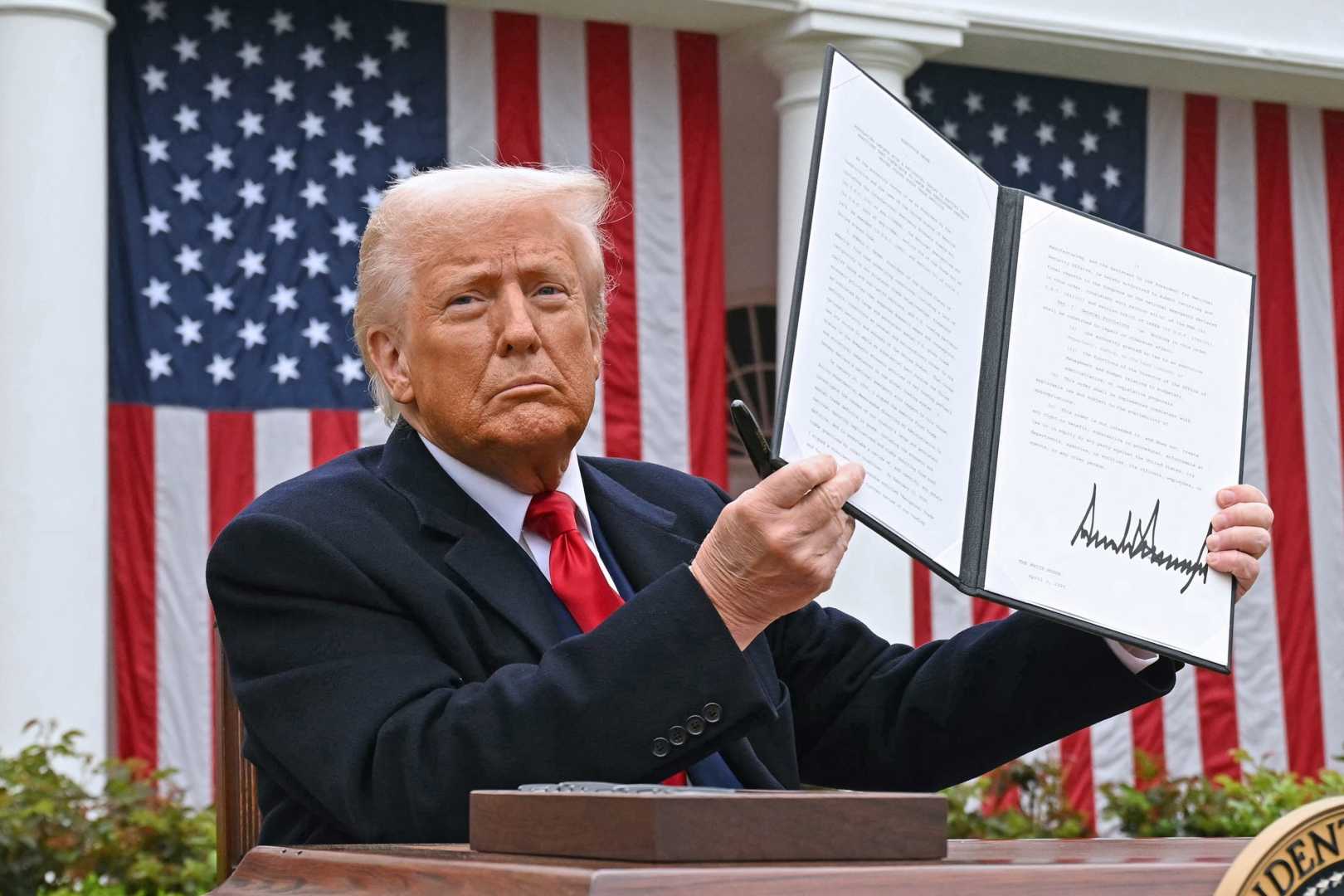Business
Trump Declares National Emergency Over Trade Deficits and Tariffs

WASHINGTON, D.C. — President Donald J. Trump declared a national emergency on April 2, 2025, citing large and persistent U.S. trade deficits as a significant threat to national security and the economy. The declaration initiates a comprehensive trade policy overhaul aimed at addressing imbalances with U.S. trading partners.
Trump’s action follows an investigation into the causes of these deficits, which were found to stem from lack of reciprocity in trade agreements, varying tariff rates, and the economic policies of key trade partners that suppress domestic consumption and wages. “Our trading relationships have become highly unbalanced, particularly in recent years,” Trump stated in his announcement.
The emergency declaration arises from the findings of previous presidential memoranda directing reviews of trade practices, including tariffs and non-reciprocal trading behaviors by other countries. The total U.S. goods trade deficit reached $1.2 trillion in 2024, a figure that has soared by over 40% in five years.
Under the new policy, starting April 5, 2025, an additional ad valorem duty of 10% will be imposed on all imports from foreign trading partners. Trump emphasized this measure is designed to ensure fair treatment in trade, as many countries have maintained significantly higher tariff rates against U.S. exports. For example, U.S. average most-favored-nation tariff rates sit at 3.3%, substantially lower than Brazil (11.2%), China (7.5%), India (17%), and others.
In his comments, Trump referenced the long-standing principle of reciprocity that has guided U.S. trade policy since 1934, noting that past agreements promised lower tariffs but have failed to provide balanced trading conditions. He argued that the current tariff disparities and non-tariff barriers disrupt American manufacturers’ ability to compete globally.
“We are facing a situation that cannot continue if we wish to protect our manufacturing base and sovereignty,” Trump declared. Non-tariff barriers that limit access to foreign markets, he said, include technical standards, restrictive licensing procedures, and various bureaucratic hurdles implemented by other nations.
In addition to tariffs, Trump’s order seeks to revitalize domestic manufacturing, which he claims has suffered from over-dependence on foreign imports. According to a United Nations report, U.S. manufacturing output has decreased from 28.4% of global output in 2001 to 17.4% in 2023.
Furthermore, the President’s statement underscored how the decline in American manufacturing capacity can impact national security. The defense-industrial base, in particular, is vulnerable to foreign supply chains, which may not align with U.S. interests, especially in times of geopolitical tensions.
Moreover, Trump urged collaboration between public and private sectors to strengthen the U.S. economy against these trade imbalances, highlighting the urgent need for corrective action. “A nation dependent on foreign goods can neither maintain its defense readiness nor its economic sovereignty,” he emphasized.
As Trump announced these measures, he faced resistance from some Senate Republicans, such as Tim Kaine, D-Va., and others, who issued a resolution to block Trump’s recent tariff initiatives on Canadian products, indicating a contentious political landscape ahead. The Senate narrowly voted 51-48 to move forward with the resolution, but it may not gain traction in the Republican-controlled House.
The latest executive order signals a significant pivot in U.S. trade policy, reshaping the dynamics of global commerce and stirring conversations about its implications for various sectors, especially manufacturing and agriculture.












